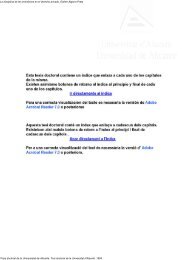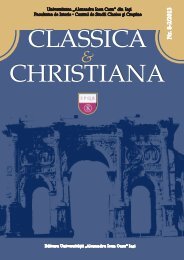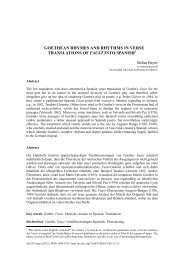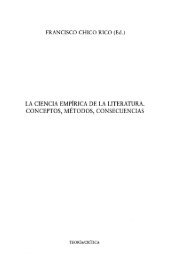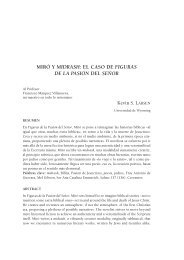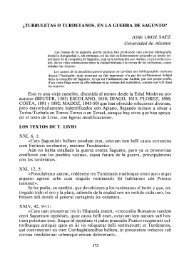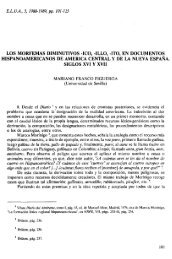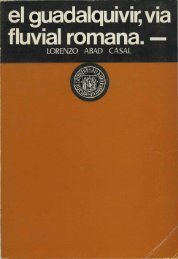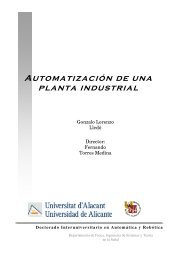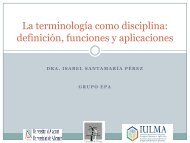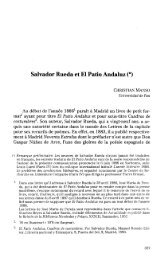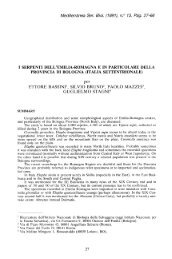ecological effects of marine protected areas empafish project ...
ecological effects of marine protected areas empafish project ...
ecological effects of marine protected areas empafish project ...
Create successful ePaper yourself
Turn your PDF publications into a flip-book with our unique Google optimized e-Paper software.
EMPAFISH Booklet no. 1 Ecological <strong>effects</strong> <strong>of</strong> Atlanto-Mediterranean MPAs in the EU<br />
having higher abundance and/or biomass within the MPA, are serranids<br />
(groupers and combers) and sparids (sea-breams) species. Groupers<br />
(Epinephelus marginatus), Dentex dentex and Dicentrarchus labrax, which are<br />
targets <strong>of</strong> artisanal and recreative fishing (spearfishing) are now well<br />
represented inside the reserves.<br />
o Benthic assemblage (commercial species)<br />
The abundance and size structure <strong>of</strong> sea urchins (Paracentrotus lividus and<br />
Arbacia lixula) have been surveyed from 1985 to 1987 (by Le Diréach &<br />
Bachet) in relation to habitat structure. Stock assessment <strong>of</strong> urchins and<br />
transplantation experiments were conducted by San Martin (1995). There is a<br />
survey especially dedicated to Paracentrotus lividus urchin in different sites <strong>of</strong><br />
the Côte Bleue since 1994 (2 surveys per year) (Bachet et al. 2001, 2002,<br />
2003).<br />
� Artificial reefs (including colonization)<br />
About ten immersions <strong>of</strong> artificial reefs have been realised since 1983 (2,500<br />
m 3 <strong>of</strong> production reefs and 2,200 m 3 <strong>of</strong> protection reefs against trawling).<br />
First surveys on artificial reefs were conducted by Ody and Bregliano from<br />
1983 to 1985 and 1987 using fish UVC and experimental fishing (Bregliano et<br />
al. 1985; Ody 1987). Charbonnel and Francour (1994) conducted another<br />
survey on the Côte Bleue artificial reefs in 1993. Special attention was<br />
dedicated to colonization <strong>of</strong> experimental artificial reefs in 1995/1997, and<br />
long term evolution was studied in 2000 by Charbonnel on 5 sites <strong>of</strong> the PMCB<br />
(Charbonnel et al. 2000, 2001).<br />
� Reserve effect and spillover<br />
Within the European <strong>project</strong> BIOMEX (http://biomex.univ-perp.fr), studies<br />
have been undertaken in 2003/2004 to test the hypothesis that spillover from<br />
MPAs to neighbouring <strong>areas</strong> should have as consequence the observation <strong>of</strong><br />
gradients <strong>of</strong> fish biomass across boundaries. In Carry-le-Rouet, as in the<br />
other 6 Mediterranean reserves choosen for comparison, this hypothesis has<br />
been tested by using UVC, baited video, and collection <strong>of</strong> fish eggs and larvae<br />
by plankton nets as sampling techniques, following the same sampling design<br />
including several sites inside and outside Eastern and Western from the MPA<br />
(Le Diréach 2003).<br />
� Other experimentations and scientific applications<br />
Experiments using transplants <strong>of</strong> edible urchins (Paracentrotus lividus) were<br />
conducted in 1990 inside the PMCB perimeter. Surveys <strong>of</strong> the sea urchins<br />
were conducted inside the reserve <strong>of</strong> Carry in 1991/1992. Groupers (E.<br />
marginatus) caught by fishermen were tagged and released occasionnally<br />
inside the Carry reserve (Bachet & Jouvenel 1999).<br />
Temperature is continuously recorded inside the reserves at 10, 17 and 23 m<br />
depth since 1998 (De Maisonneuve et al. 2001, 2002; Daniel et al. 2003).<br />
55



